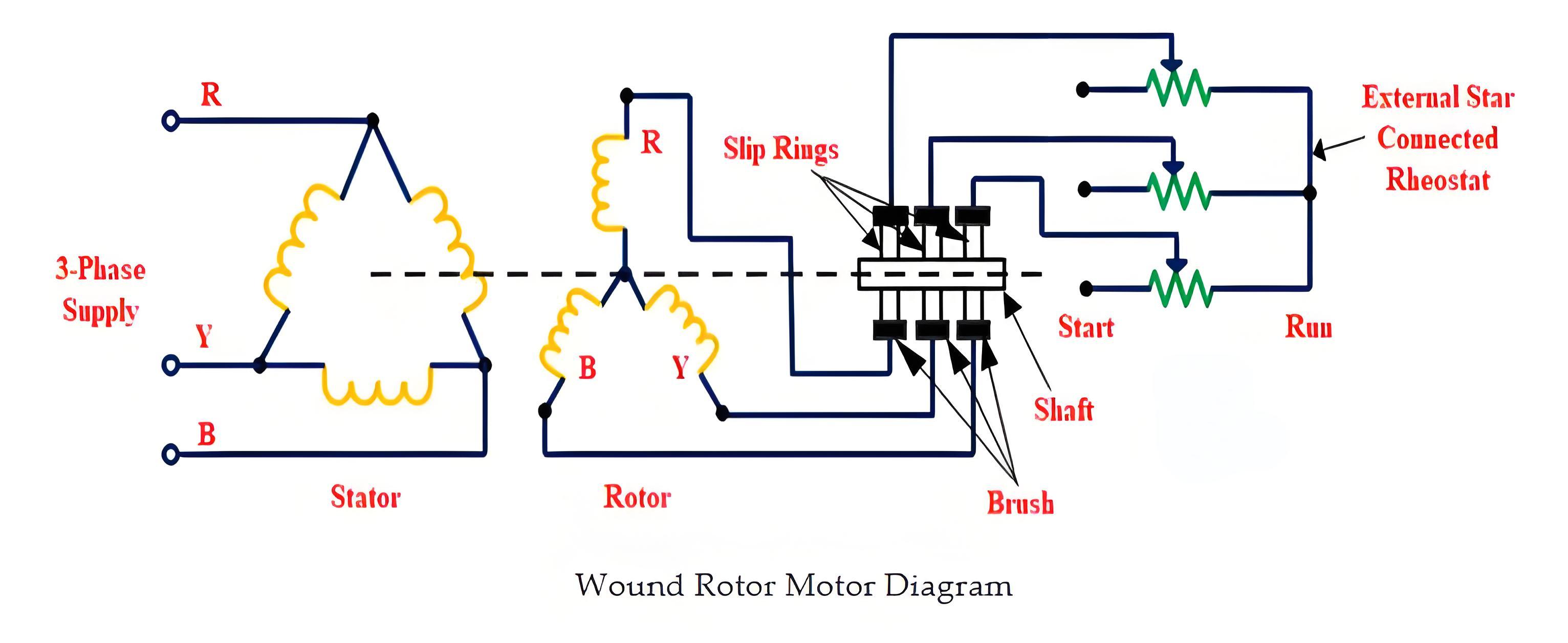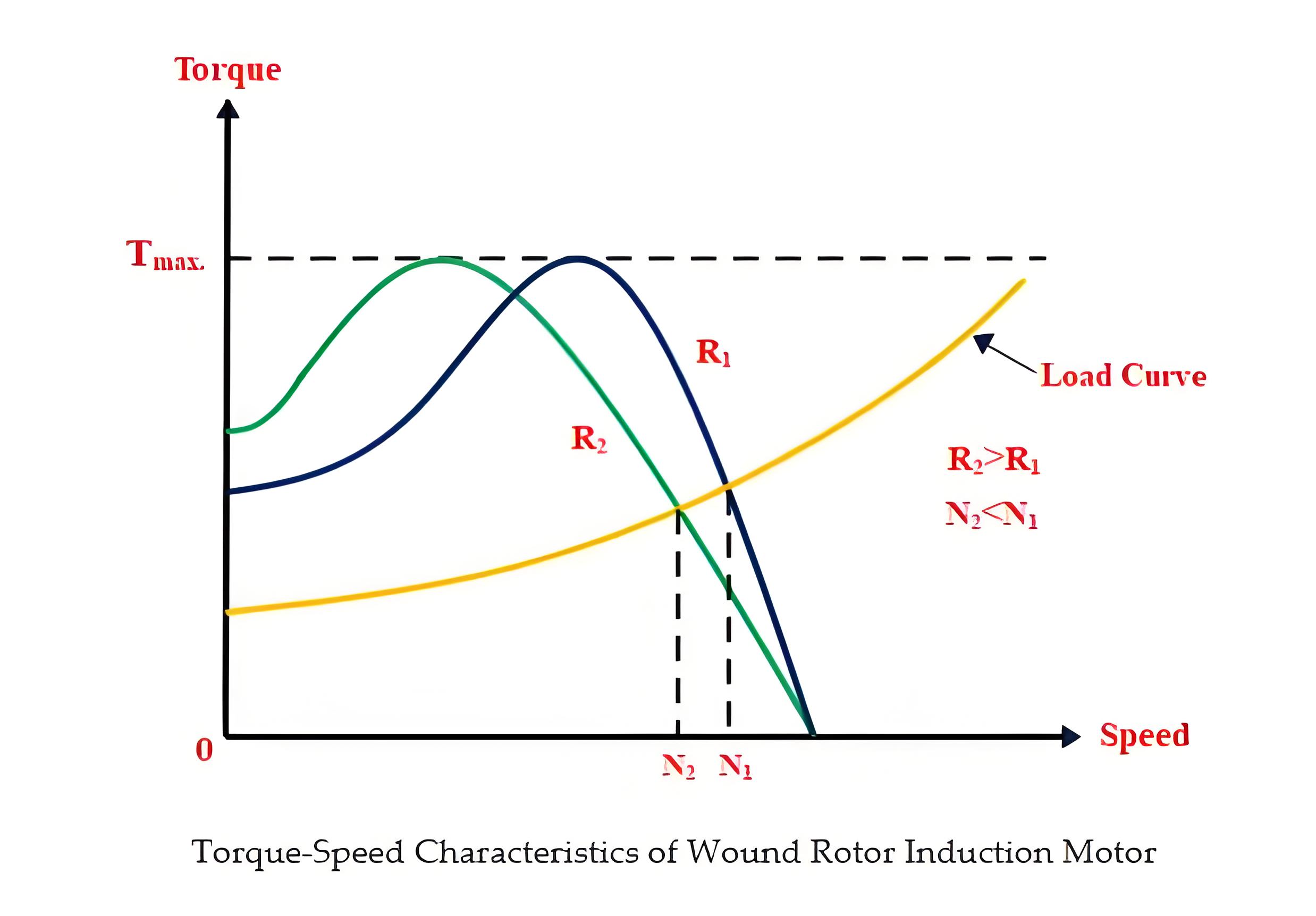What is a Wound Rotor Induction Motor?
What is a Wound Rotor Induction Motor?
Winding rotor induction motor definition
A wire-wound rotor induction motor (also known as a circular motor or slip-ring induction motor) is defined as a special type of three-phase AC induction motor designed to provide high starting torque by connecting an external resistance to the rotor circuit. The rotor of the motor is a winding rotor. That is why it is also called a winding rotor or phase winding induction motor.
The running speed of a slip ring induction motor is not equal to the synchronous speed of the rotor, which is why it is also called an asynchronous motor.
Winding rotor motor diagram
The stator of the winding rotor induction motor is the same as that of the squirrel-cage induction motor. The number of poles wound by the rotor of the motor is the same as the number of poles of the stator.
The rotor has three-phase insulated windings, each connected to a slip ring by a brush. The brush collects current and transfers it to and from the rotor winding.
These brushes are further connected to a three-phase star connection rheostat. The following figure shows the winding rotor induction motor diagram.

In a wire-wound rotor induction motor, torque is increased by adding an external resistance to the rotor circuit using a star-connected rheostat.
As the motor speed increases, the rheostat resistance is gradually cut off. This additional resistance increases the rotor impedance and therefore also reduces the rotor current.
Starting of the winding rotor induction motor
Rotor resistor/rheostat starts
Slip ring induction motors are almost always started with a full line voltage applied to the stator terminals.
The value of the starting current is adjusted by introducing a variable resistor into the rotor circuit. The control resistance is in the form of star-connected rheostat. As the motor speed increases, the resistance is gradually cut off.
By increasing the rotor resistance, the rotor current at starting is reduced, so is the stator current, but at the same time the torque is increased due to the increase in the power factor.
As mentioned earlier, the additional resistance in the rotor circuit enables the slip ring motor to produce a high starting torque at a moderate starting current.
Therefore, the winding rotor or slip ring motor can always be started under a certain load. When the motor is running under normal conditions, the slip ring shorts out and the brush is removed.
Speed control
The speed of a winding rotor or slip-ring induction motor can be controlled by changing the resistance in the rotor circuit. This method is only applicable to slip-ring induction motors.
When the motor is running, the speed of the motor is reduced if a full resistor is connected in the rotor circuit.
When the speed of the motor is reduced, more voltage is induced in the rotor circuit to produce the necessary torque, thereby increasing the torque.
Similarly, when the rotor resistance decreases, the speed of the motor increases. The figure below shows the speed-torque characteristics of a slip ring induction motor.

As shown in the figure, when the rotor per phase resistance is R1, the motor speed changes to N1. The torque-speed characteristic of the motor at R is shown as the blue line.
Now, if the rotor resistance per phase increases to R2 the motor speed decreases to N2. The torque-speed characteristic of the motor at R is represented by the green line 2.
Advantages of winding rotor motor
High starting torque - slip ring induction motors can provide high starting torque due to the presence of external resistance in the rotor circuit.
High overload capacity - slip ring induction motor has high overload capacity and smooth acceleration under heavy load.
Low starting current compared to squirrel cage motors - additional resistance in the rotor circuit increases the rotor impedance, which reduces the starting current.
Adjustable speed - Speed can be adjusted by changing the resistance of the rotor circuit. Therefore, it is considered a "variable speed motor".
Increase power factor
Common use
Wire-wound rotor motors are used in high-power industrial applications that require high starting torque and adjustable speeds, such as cranes, lifts and elevators.
The Electricity Encyclopedia is dedicated to accelerating the dissemination and application of electricity knowledge and adding impetus to the development and innovation of the electricity industry.













